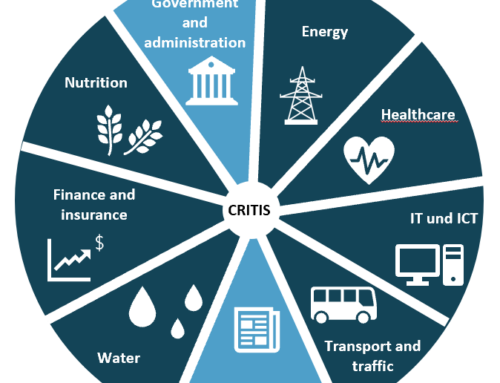Why your communication today is critical to your performance tomorrow
Germany and the world are in a state of emergency. Many industries, such as the automotive sector, are experiencing one of the worst crises ever (source: industry analysis by management consultants Bain & Company), sales are down and all forecasts are uncertain. With all the efforts to save one’s own company over the crisis, one thing can quickly fall into the background: Leading the company through the crisis.
Employees feel that otherwise stable companies are suddenly standing on shaky ground. Companies that were still forecasting a good business year for their employees during New Year’s speeches now have to announce short-time work. Consequences that every employee feels more keenly than all of the internal and external personnel marketing measures from the time before the crisis.
But what does this mean for employers?
If you don’t do a good job of crisis communication now, you will have a hard time retaining existing employees and finding new ones after the crisis.
One of the main goals for many companies before the crisis was to position themselves as an attractive employer in the highly competitive applicant market and to retain existing employees. But the employer-employee relationship is just that: a relationship. A relationship in which you really notice that you fit together when you also master crises together and stand side by side even in hard times.
Good crisis communication now secures the trust of your employees for the future – more than free coffee and a discount code for the gym next door ever could in rosy times.
We have therefore put together a few tips for you below on how to strengthen your crisis communication and thus secure your future as an employer in the long term with little or no investment. By the way, these apply to both companies that are experiencing a sharp decline in business due to the crisis and those that are experiencing an unexpectedly high workload due to the crisis. Short on time? You will find the essence of each section summarized succinctly below.
Communicate!
“You can’t not communicate” – this quote by Paul Watzlawick is familiar to everyone, and yet it helps to remind yourself of exactly that again right now. Communicate with employees regularly, consistently and stringently. You are silent because there is a lot to be settled right now, you have to secure the existence of the company now and the details would possibly scare your employees as well? In this way, the worst speculations gain the upper hand in the minds of your employees and become concrete fears.
In summary: If you want to put your employees in the greatest panic, keep quiet.
Crisis communication is a management issue!
There is a reason why the chancellor speaks on generally important issues in the state and not the staff undersecretary. When things get serious, you want to talk to someone who has something to say and has an overview of the general situation. Of course, the support of the communications department, human resources and health management is absolutely needed but the sender of all messages to the workforce should always be management.
In summary: When it gets serious, the chief speaks.
Timeliness is key!
Do you like to watch the daily news from the day before yesterday? Probably not. Your employees feel the same way. Always inform your employees about the current situation of the company. Certainly, this requires some creative solutions at this point in time. Employees who know the current situation trust you as an employer more and speculate less. Employees who trust in you and feel involved will continue to enjoy working for you even after the crisis. If the grapevine precedes your official communication, you will automatically be the last to speak on the subject.
In summary: Grapevine works even without a hallway. Be faster.
Honesty is the best policy!
In that case: Transparency binds employees longer and stronger. When communicating to your employees, transparency is key. Be honest and positive, but avoid making speculative or euphoric statements at all costs. The disappointment of seeing euphoric assessments not come to fruition in the end will have a more lasting and negative impact on your employees’ trust in you as a leader than a less positive but honest assessment. Also admit mistakes, if any were made, and emphasize what was learned from them and what is now being done to prevent this from happening in the future.
In summary: Be honest and positive instead of speculative and euphoric.
Be digital and analog!
Unusual times call for unusual and often new ways. Some people are partially or completely in the home office or on short-time work, others belong to the “system-relevant areas” and work excessive hours under difficult conditions. No matter which category your employees fall under: Reaching all of them is difficult, especially now. So use new and unusual channels to create closeness with your employees. These can include new digital channels, such as video messages or employee apps that can be set up at short notice, such as Staffbase NOW, but also analog channels. For example, send postcards home to your employees to show them that you as a company are fully behind them – even or especially when they can’t work at the moment. The investment here is often manageable, but pays off many times over.
In summary: Think out-of-the-box instead of in pigeonholes when it comes to your communication.
Take fears seriously!
Right now, your employees are more sensitive, insecure and often more anxious than usual. Take each of these worries and fears seriously and take the time to discuss them and learn more about the reason behind them, as well as to work out solutions and assistance. Actively exposing yourself to an increased risk of infection while also putting your family at greater risk or the fear of losing your job of many years are not minor concerns and deserve your attention. Due to reduced contact, this is often difficult, so it is also advisable to consider the previous point here. How about, for example, a (digital) office hour offered by your HR department, a central mail address for queries or a hotline that your employees can contact centrally?
In summary: Every fear your employees have has its cause and deserves your attention.
Trust is everything!
“After all, if my employees are working at home, I can’t check if they are really working all the time”. Right. Can you, then, under normal circumstances? Probably not either. Hand on heart: when your employees are in the office, they probably don’t work with full concentration every minute either. Your employees probably spend less time in the coffee kitchen at home, talk less with other colleagues, and aren’t as easily distracted. More likely, employees will want to prove to you what they were able to accomplish in the home office. A two-year study by Stanford University proves that working from home actually significantly increases productivity and reduces absenteeism.
If you trust your employees, they will value it over the crisis phase. Instead of asking yourself “What if the employee works less in the home office?”, rather ask yourself “What if it turns out that he works much more effectively in the home office?”.
But again, the above study came to a conclusion that may surprise you. Employees from the study complained more about feeling isolated and preferred to work back in the office at least part of the week.
Your employees will later remember both a basic trust and a basic distrust of their employer – it’s up to you.
In summary: Start topics like home office with 100% trust, instead of approaching it with 100% pre-suspicion.
Your employees as crisis solvers!
Are you looking for solutions to create new revenue generators during the crisis? Are you looking for opportunities and new processes for your systemically important company during this time of extreme stress? How many of your employees are actively working on this? How many of your employees might have new and good ideas? Actively request these ideas. All it takes is setting up a mail address where ideas can be sent, actively and repeatedly communicate this address as well, and encourage your employees to submit ideas. Make sure that the incoming mails are answered promptly and appreciatively and that particularly good ideas are published internally. Your employees will appreciate being actively involved instead of passively waiting.
In summary: Let your employees actively help you steer your company through the crisis.
A guest article by Sarah Rupperath, published on 18 April 2020. She is a marketing manager at a global service company with almost 12,000 employees worldwide and volunteers in her spare time for civil protection.






